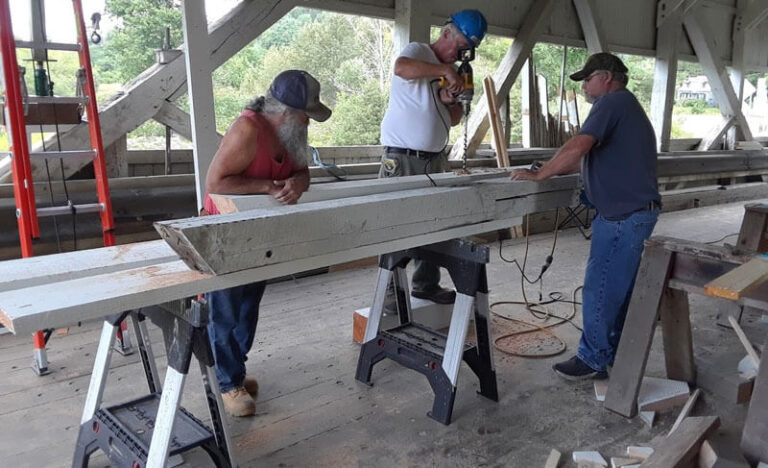Wood Routers Alternatives: A Guideline to Cut Groove Without a Router
Woodworking is all about cutting, finishing, shaping. So a router is a mandatory tool for workshops. But there might come a situation when your router can betray you. Besides router is a bit expensive tool and for a novice woodworker, it can be a burden. If your router suddenly stops working or does not have a router right now, it is better to go for alternate options to cut a groove.
There are multiple options to cut grooves without a router. Here I am going to discuss that. Just remember before power tools were introduced carpenters did their work with perfection. So it is not mandatory to have a power tool to get your work done.
Purpose of groove: grooves are also known as joinery. It plays a different role in woodworking. Tabletop, architectural paneling, door whatever you make you will need grooves. Grooves and tongues work as holding points together and keep the structure together. Dadoes and rabbets are kinds of the same but in the case of grooves, extra glue gives additional strength to the structure.
Cutting Groove by Using Dremel
From my own experience, I can tell Dremel is the best tool to cut grooves in case of a small wood piece. It requires a very simple and easy technique to cut grooves however if the wood size is large and you need to cut a larger groove you might find it time-consuming.
To cut a groove with the Dremel tool at first mark the point with a pencil. Then fix the blade and place the tool on the top of the workpiece. Slowly start to cut the groove as per the drawn line. Make sure the blade goes precisely, according to your selected depth.
Table Saw
Table saw is another tool that can cut grooves and can be a good alternative to routers. At first, take a table saw and check the blade. Now take the workpiece and mark it with a pencil according to your desired cutting. Then place the wood piece under the table saw. Use your hands to press the wood piece along with the fence and keep it stable when the table cuts the wood. Now move the workpiece forward and start grooving.
When cutting a grooves, make test cut to check whether the depth and width of the blade is alight or not. Standard blade for a table saw is 1/8” and you can cut grooes with this. However there are some narrow kerf blade which can cut a tenth of an inch.
If your workpiece is large take a partner to help you. Be careful when you are working with a table saw and keep your hands away from the blade.
Chisel
Chisel is probably the cheapest tool that can be used as an alternate router. Chisel is not hard to handle but needs some patience and expertise to complete the work. To cut a groove with a chisel at first make a parallel line according to your desire. You can use a pencil but I would suggest using a hand saw to do this. Then start to use your chisel carefully. Cut a small amount of wood and make a perfect groove. Do not forget to fix the wood piece with the table using some clips.
Rabbeting Plane
Before the existence of router and table saw, the rabbeting plane was there for woodworkers. This tool has a history of hundred years as a perfect partner of woodworkers. Rabbeting plane can be metal or wood bodied and come with variety of depth. Most common depth of rabbeting plane is one inch to match the most common groove size.
Rabbeting plane can be used in the middles of the workpiece or on the edge. Rabbeting plane can cut with grain as well as perfect for crosscutting. The major difference between crosscutting and cutting with grain is crosscutting requires a thinner depth of cut than cutting with grain
Rabbeting plane is a very old hand tool without the fence. However, now some models are available with fence. Since most of the tool do not have fence professional cut a narrow groove with knife that guide the plane to go smoothly.
Combination Plane
Combination plane is another edition in the team of routers alternate. You can tell it the modern version of the rabbeting plane. It has different types of blades that allow you to cut grooves according to your desired size and depth. Before starting work mark a line with a pencil. Then place the wood on the table. Choose the right blade from the different available blades of a combination plane and fix it. Then place the tool with the marking line and press it. Use your hand to keep the tool stable and move it forward to cut the groove. Start scratching on the wood and do it multiple times to get the perfect grooves.
Cons of Not Using Router
If it is a matter of argument “whether it is possible to cut grooves without a router or not” then the answer is it possible to cut grooves without a router. However, there are some cons. undoubtedly, router is the best tool to cut perfect grooves. Routers come in different sizes of bits, so you can easily find the perfect shape and size from them. Another problem with not using a router is it is a time-consuming process to cut a groove with other alternatives.
Wrap up
Well! This are almost everything about the alternate options of router. Since using a router is more professional for woodworking and less time-consuming, it is better to go with a router if you have professional obligations. But if woodworking is a hobby then you can try all these ways without hesitation. All of these steps are effective to cut grooves. After all, there is no problem in trying something new. Just give a final touch with sandpaper whatever tools you use. Another important matter during working with these tools is -always stay careful. Use safety goggles and take help form a partner. Do not forget whatever you are doing safety always comes first.
Table of Contents






